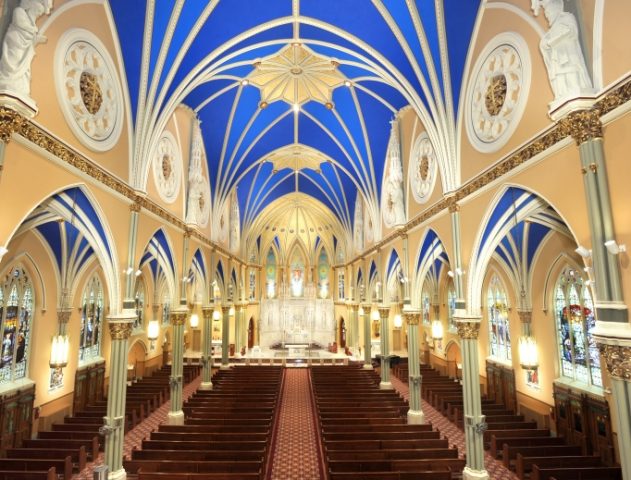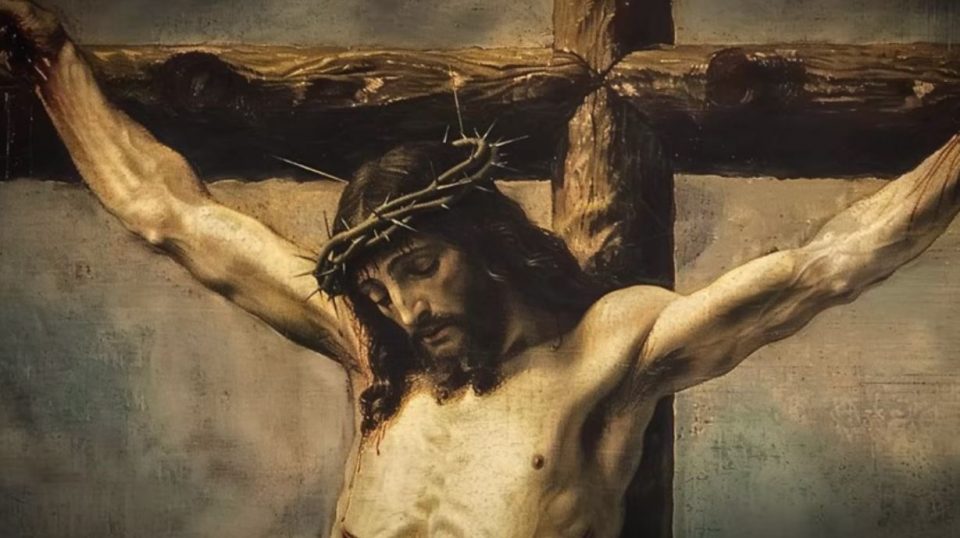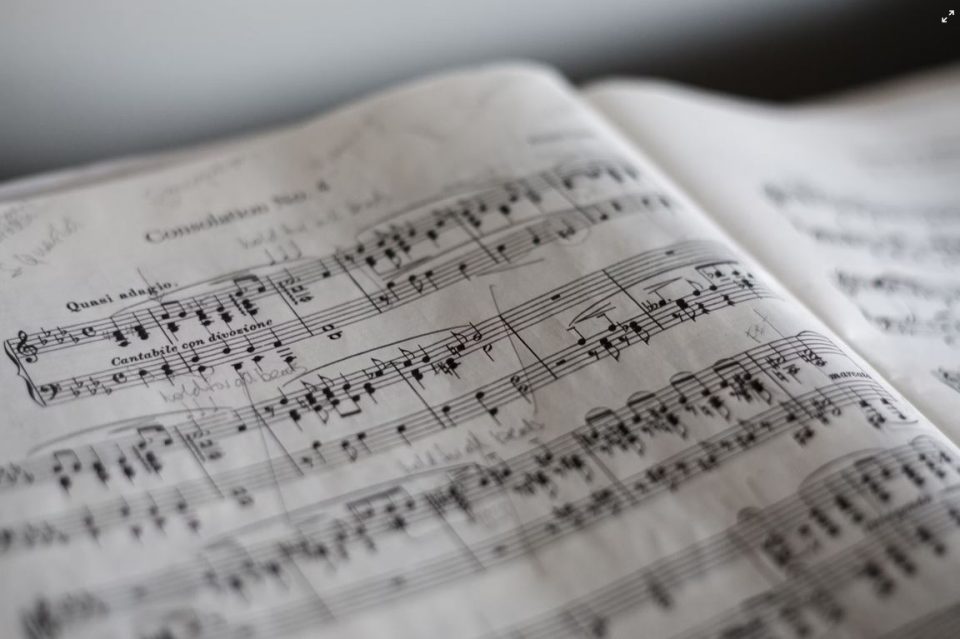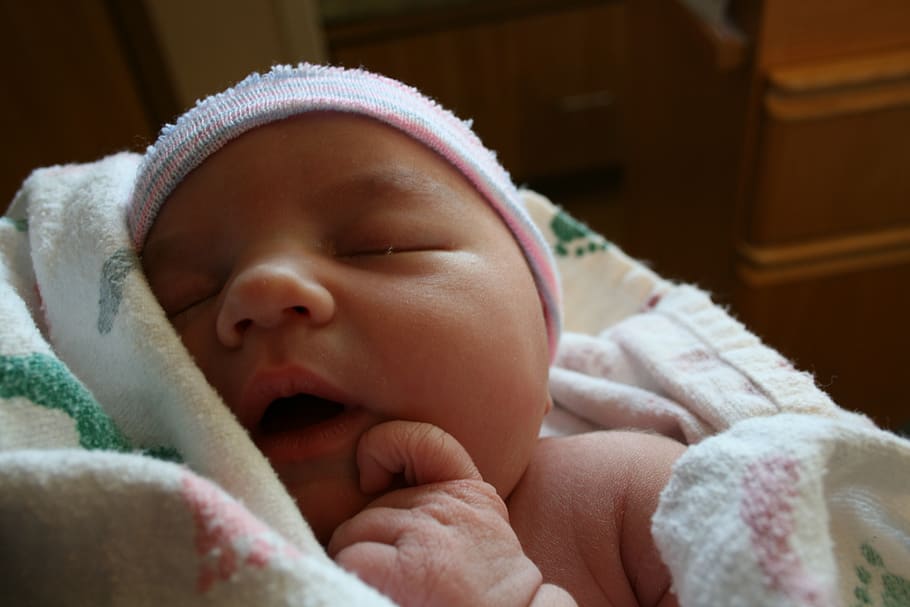Above photo, bold color decorates the work of Daprato Rigali Studios at St. Alphonsus Church in Chicago. Below, a look at the 2014 renovation of the Co-Cathedral of St. Joseph in Brooklyn, New York, by Evergreene Architectural Arts.
Increasingly busy studios facilitate sacred artwork’s return to prominence.
When David Riccio started working at John Canning Studios in Cheshire, Connecticut, 20 years ago, he could expect one or two church projects per year. The bulk of the studio’s work was carried out at secular sites such as theaters, libraries and state capitols. Around 15 years ago, however, the number of church projects began to grow, necessitating a special division at Canning. Riccio now heads that division — called Canning Liturgical Arts — and he works on 20 or more ecclesiastical projects per year.
Some projects are simply a matter of cleaning and painting already existing churches, but most are more extensive. They involve the delicate uncovering and restoration of hidden or neglected artwork, such as sanctuary murals. Other, even more extensive projects involve the designing and installation of new artwork in old or new church buildings.
A stellar example of this last type of project for Canning is the Shrine of Our Lady of Guadalupe in La Crosse, Wisconsin. Renowned architect Duncan Stroik designed the main structure of the building, which began construction in 2004. Riccios headed Canning’s involvement, beginning in 2007 and ending in 2008, with the completion of the shrine.
Artwork in the shrine includes paintings, sculptures and mosaics, all related in some way to the apparitions of the Blessed Virgin Mary to St. Juan Diego in the 1500s. Riccio even said that his studio went to the trouble of asking an observatory about the exact constellation in the sky at the time of the apparition that resulted in the miraculous image still present in Mexico today.
Riccio explained: “We wanted the stars on the shrine’s dome to correspond to what was in the sky when the apparition occurred, since the image of Our Lady includes stars. It’s a beautiful dome that fits in well with the theme of the shrine. However, it’s not the most ornate dome. It does its job — no more and no less.”
That idea of just proportion is something people might not expect from an interior designer on large projects Yet Riccio is not interested in adding layer upon layer of ornamentation in pursuit of “opulence for opulence’s sake.” He said this distracts from sacred artwork’s purpose, which is to point beyond itself to Christ.
Riccio believes that even though the tendency in the 1960s and ’70s was to underdo church design, it is possible to overdo it. However, his work now nearly always involves bringing out beauty by uncovering and restoring what’s already there or by introducing it in renovations or after the construction of new churches. He said that Canning’s work “is usually about addition rather than subtraction.”
Some people might be concerned about the subtraction from their bank accounts as a result of embarking on a beautification project. However, Riccio who earned a business degree from nearby Quinnipiac College before joining Canning in an apprenticeship role, allays their fears. One clarification he provides is that beautiful churches usually cost no more than mediocre or ugly ones.
“Mediocre or bad church designs can cost just as much as good ones, and the durability is not usually there, so you can easily end up paying even more over the years for a mediocre or bad design than a good one,” Riccio said.
Another clarification that allays economic concerns is that truly beautiful designs inspire people to find the money necessary to make the project happen. Riccio has found that when presented with colorful depictions of proposed artwork that brings the Catholic faith to life, parishes are impressed enough to raise money quickly.
“If the design is not that striking, there’s no motivation to contribute, because it’s a just a lateral move rather than a move upward — and that upward focus is what people really want. When the glory of God is reflected in a proposal, people have a reason to move to action,” Riccio stated, quoting Dante Alighieri’s assertion that “beauty awakens the soul to act.”
An Invitation to Prayer
Emily Sottile, director of the Sacred Space Studio at Evergreene Architectural Arts in Brooklyn, New York, has also witnessed a dramatic increase in the number of church projects. “I’ve been with the company for 10 years,” she said, “and just in the past four years I’ve been in this position, we’ve tripled or quadrupled what we had been doing in churches.” That multiplication means 30 active ecclesiastical projects this year for Evergreene.
Sottile, like Riccio, has experienced the power of beauty to “awaken the soul to act.” She can point to many times when a parish commits to implementation of transcendent beauty and the money subsequently appears from all kinds of sources. The 2014 renovation of the Co-Cathedral of St. Joseph in Brooklyn, New York, is a perfect example.
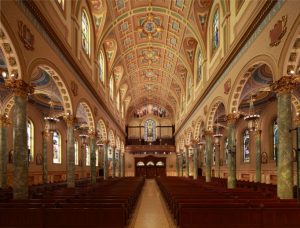
A lot of money was raised before the project began, but even after it was completed, people were so appreciative of the transformation that they wanted to contribute. More than $75,000 in unsolicited donations came pouring in after completion — and from the most unexpected sources, including parishioners who lived extremely modestly and visitors to the co-cathedral who were moved by its beauty.
“That kind of thing happens,” Sottile said, “when a worthy project is involved. People see transcendent goodness and truth expressed through humble materials like plaster, clay, glass and paint and then they’re inspired to be a part of it.”
Sottile has vast knowledge of sacred architecture through her education in art history and theology and her travels in Europe. While studying at the University of Oxford 2002, she embarked on the “Grand Tour” of continental Europe, guided by Medieval and Renaissance art and architecture experts. Sottile uses her many voyages, which continue today — she has already been on separate trips to Italy and France this year — to gain a sense of precedence from the architectural and artistic masterpieces of Europe.
“Seeing the magnificent churches, shrines and art exhibits, and studying why they were made, has been very instrumental in my outlook on life and on my work today, “Sottile explained. “There are so many blessings to take away from that,” she added, “not the least of which is the reminder that this kind of art and architecture is very possible right here and right now.”
Two of Sottile’s most recent projects — St. Pius X Church in Granger, Indiana, and St. Turibius Chapel at the Pontifical College Josephinum in Columbus, Ohio — were carried out in conjunction with architect William Heyer. Sottile used the structural plans, conversations with the design team and historic precedent to guide the decorative aspects of the projects. It is important to her for the artistry to have a strong relationship to the architecture and visually articulate the priorities of the community.
This flexibility is present not only in collaborations with architects on new buildings, but in collaborations with parishes on ones that are already in existence. The first thing Sottile does when starting a renovation project is to simply visit the church in question.
“I want to get a sense of its dimensions, colors, lighting, history, the thinking behind its design,” she said, “and then what changes the parish has in mind. This intake of information helps me to get a big-picture view of things and gives a sense of what’s possible for us to contribute.”
After thinking big and making a list of decorative possibilities, with the ultimate goal being to ensure that the whole church building is an invitation to prayer, Sottile then crosses out, line by line, what is unaffordable or what might be deferred. She also makes additions, as she has found that parishes often have great ideas that had not occurred to her. She gradually moves toward an organized, phase-by-phase plan to recover, enhance or create beauty — depending on the nature of the project.
Like Riccio, Sottile does not let a love of decoration override practical considerations. If a parish wants to put up ceiling murals but its roof is leaking, Evergreene will work with the parish team to develop a long-term plan that prioritizes their immediate needs (however mundane they might be) and makes efficient use of resources.
“You don’t want to pay to build scaffolding twice,” she said, also asserting, “Knowing how to group tasks so the momentum is behind the liturgical artistry and ensuring all of the essential elements like plaster and paint are in sound condition is an art, too. We can free up money to do decorative work if we can develop intelligent ways to address logistical concerns.”
“We want to bring out the glory of God,” Sottile said, “but with structural and economic concerns addressed, not just aesthetic ones. We want to install beautiful and durable expressions of Catholic beliefs in an orderly, coherent way that combines faith and reason. This makes for a marvelous spiritual home for worshippers.”
Sottile is pleased with the opportunity to enhance more and more churches with the staff at Evergreene and believes there is plenty of work to go around. She stated, “Other studios are not our competition. Our real competition is the idea that this type of thing can’t be done. Thankfully, we’re winning that battle more and more.”
Carrying on a Family Tradition
Dan Rigali, national sales executive and project manager at Daprato Rigali Studios in Chicago, Illinois, enjoys carrying on a family tradition. His great-great-grandfather, John Rigali, came from Italy in the late 1800s to collaborate with the Daprato brothers at their already existing statuary studio.
By 1960, the company was named Daprato Rigali Studios and had expanded to include other aspects of church decoration, such as mural painting and the manufacture of handmade stained-glass windows.
Dan Rigali began working at Daprato Rigali early on in high school. He learned how to make and install stained-glass windows, do some decorative painting, and manage small projects. He worked periodically at the studio throughout high school and college, and, after considering a great job offer in another industry, realized how important “upgrading the quality and beauty of manmade buildings” was. He officially rejoined the family business after graduating from the University of Denver in 2009.
Rigali shares Riccio’s and Sottile’s belief that churches can be not only beautiful, but affordable, durable, proportional, historical, prayerful — and a powerful source of community-building.
“The physical appearance of a church sets the tone for what goes on inside the church. When you see scenes from the life of Christ in living color, it’s that much easier to believe the truths of the faith and celebrate the sacraments in a reverent way that brings out the best in everyone,” Rigali said.
Rigali stated that, after the “dark ages” of U.S. church design in the 1960s and ’70s, an awakening occurred. “Standards were lowered in so many areas of life at that time, and ecclesiastical design was no exception. I’m too young to remember, but I’m told work here slowed down. We were able to do some great projects here and there, but things really began to take off in the 1990s,” Rigali said.
Now Daprato Rigali, like Canning, works on approximately 25 projects per year. One of the studio’s most celebrated transformations occurred at St. Alphonsus Church in Chicago. It had been one of the city’s iconic buildings but in recent decades had fallen into disrepair. Its Gothic structure was full of promise, however, the fruition of which could be seen when the walls and ceiling were painted glorious tones of blue, gold and yellow.
“People should be able to walk into any church and be reminded of heaven, but St. Alphonsus is a particularly vibrant and impactful example of that concept,” Rigali stated. He added that “it’s awe-inspiring to look up and see the blue and yellow paint working together in harmony. It’s a reminder of the perfect order in heaven, how all of creation points toward God, and how the good, true and beautiful are one in a most amazing way.”
Rigali also believes that “there’s a fine line between choosing the right colors to come together in glorious harmony and choosing the wrong colors to bring about distraction or disinterest.” The specific tones used at St. Alphonsus were the result of taking colors in the stained-glass windows as reference points, tracking how much light came into different areas of the church at different times of the day, and actually testing various tones on sections of the walls.
The success of St. Alphonsus is one of many examples Rigali can cite for his belief that “a real Renaissance is happening in ecclesiastical design. That’s so much the case that I can even see it in our secular projects. Theaters and civic buildings often take their cue from church buildings, so the stenciling or stained glass or plaster work or marble work or whatever else we’re asked to do in them often has a strong religious influence — although not always overt.”
Rigali sees the resurgence of thoroughly Catholic churches as being part of a larger movement in other areas of life. “People are looking at the Church anew and seeing how it can elevate and ennoble our understanding of so many areas of life. We’re happy at Daprato Rigali to do our part, and we’re pleased that so many parishes have partnered with us to make God’s design’s shine forth once again.”
Register correspondent Trent Beattie writes from Seattle.




